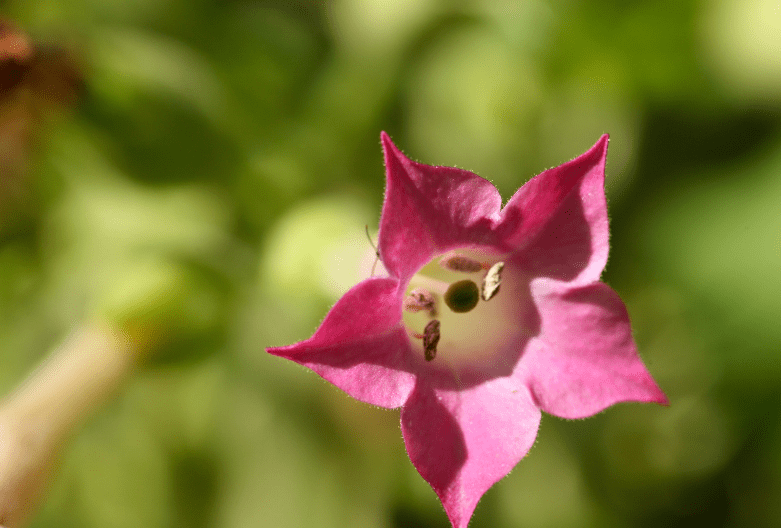
Flowering tobacco (Nicotiana) is a delightful annual that explodes with blossoms from summer to frost. Its sweet, intoxicating scent at night adds a magical touch to gardens. Plus, the variety of colors and sizes makes it incredibly adaptable to any landscape design. Are you ready to add this beauty to your green space?
Benefits of Growing Flowering Tobacco
- Attracts Pollinators: Butterflies and hummingbirds are irresistibly drawn to the nectar-rich blooms.
- Long Bloom Time: Delight in floral displays right up until the first frost of autumn.
- Fragrant Blooms: Many varieties release their heady sweet fragrance during the evening.
- Versatile Usage: Thrive in borders, containers, and as cut flowers in bouquets.
Challenges of Growing Flowering Tobacco
- Pest and Disease Susceptibility: Learn what to watch out for and how to protect your plants.
- Potential Toxicity: It’s essential to know that parts of the plant are toxic if ingested.
How to Grow and Care for Flowering Tobacco
Light Requirements
- Most Varieties: Flourish in full sun (6+ hours of direct sunlight each day).
- Partial Shade Tolerance: A few varieties can handle some afternoon shade.
Soil
- Well-Draining: Essential for preventing root rot.
- Fertile: Flowering tobacco prefers nutrient-rich soil. Amend with compost if needed.
Water
- Consistent Moisture: Keep the soil evenly moist, but not waterlogged.
- Drought Tolerance: Once established, they can handle short dry spells.
Temperature and Humidity
- Warm Temperatures: Flowering tobacco thrives in summer heat.
- Humidity Tolerance: Most varieties adapt well to average humidity levels.
Fertilizer
- Balanced Fertilizer: A monthly feed with a balanced liquid fertilizer supports blooms.
- Avoid Over-Fertilizing: Too much nitrogen leads to excess foliage, fewer flowers.
Types of Flowering Tobacco
Nicotiana alata
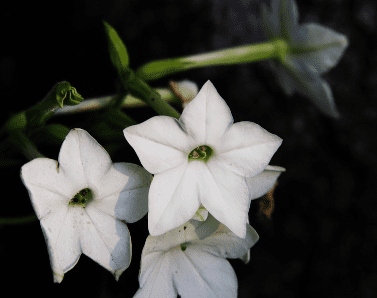
- Height: Up to 4 feet tall
- Colors: White, pink, red, lime green
- Fragrance: Most fragrant in the evening
Nicotiana sylvestris
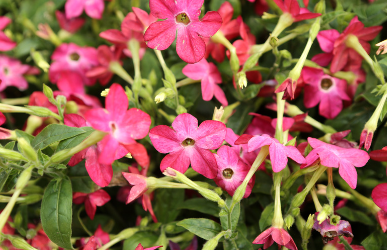
- Height: Up to 5 feet tall
- Colors: Pure white
- Fragrance: Strong, sweet scent
Nicotiana x sanderae
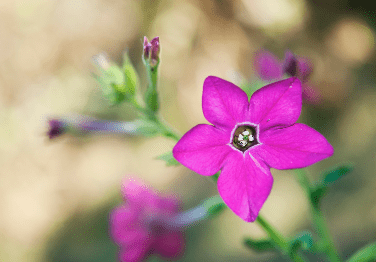
- Height: 1-2 feet tall
- Colors: Wide variety, including bi-colors
- Fragrance: Subtle fragrance
Other Notable Varieties
- Nicotiana langsdorffii: Unique with small, greenish bell-shaped flowers.
- Nicotiana mutabilis: Color-changing blooms transition from pale pink to deep rose.
Pruning and Propagating Flowering Tobacco
Pruning for Health and Shape
- Deadheading: Removing spent flowers promotes continuous blooming.
- Pinching: Encourages branching, resulting in a bushier plant.
Propagating from Seed
- Seed Saving: Collect seeds from dried flower heads for next year’s planting.
- Starting Indoors: Sow seeds 6-8 weeks before your last frost for early blooms.
Common Pests and Diseases of Flowering Tobacco
Pests
- Aphids: Control with insecticidal soap or neem oil.
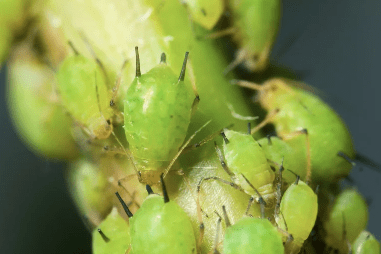
- Flea Beetles: Diatomaceous earth or row covers protect young plants.

- Tobacco Hornworms: Handpicking large caterpillars, Bacillus thuringiensis (Bt) for infestations.
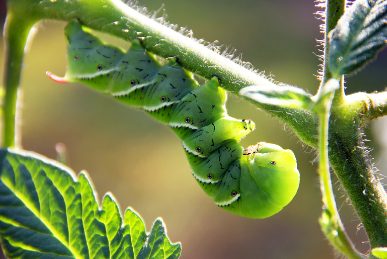
Diseases
- Tobacco Mosaic Virus: No cure, prevent by disinfecting tools, removing infected plants.
- Fungal Diseases: Proper watering, good air circulation help prevent these.
How to Get Flowering Tobacco to Bloom
Sunlight is Key
- Ensure Ample Light: Inadequate sunlight is a primary reason for lack of blooms.
Feed for Flowers
- Phosphorus-Rich Fertilizer: Use a bloom booster at midseason.
Don’t Neglect Deadheading
- Diligent Removal: Regular deadheading redirects energy to new flowers.
Where to Buy Flowering Tobacco
- Garden Centers and Nurseries: Your local garden centers are fantastic sources for flowering tobacco plants in spring and early summer. Look for healthy, well-branched specimens.
- Online Retailers: Many online seed companies and plant nurseries offer a diverse selection of flowering tobacco varieties. This option is excellent for finding unusual colors or cultivars.
- Farmer’s Markets: Occasionally, you may find flowering tobacco starts sold at local farmers’ markets.
Flowering Tobacco in Pots
- Container Companions: Flowering tobacco works beautifully in mixed container arrangements. Combine it with colorful annuals for a stunning show on your patio or balcony.
- Size Matters: For pots, choose compact varieties of flowering tobacco or be prepared to transplant your seedlings into larger containers as they grow.
- Drainage is Key: Ensure your pots have ample drainage holes to prevent soggy roots.
Flowering Tobacco Uses
- Border Beauty: Mass plantings of flowering tobacco make a dramatic statement in garden borders.
- Fragrant Evenings: Place flowering tobacco near seating areas, windows, or walkways to enjoy its intoxicating scent in the evenings.
- Cut Flower Star: The long stems and colorful blooms make flowering tobacco an excellent choice for bouquets and floral arrangements.
Flowering Tobacco Seeds
- Saving Your Own: Collecting seeds from dried flower heads provides you with free seeds for future seasons.
- Starting Indoors: Get a head start by sowing seeds indoors 6-8 weeks before your last frost date.
- Direct Sowing: Depending on your climate, you might be able to direct sow seeds outdoors once the soil warms up in spring.
What Does a Flowering Tobacco Plant Look Like
- Foliage: Most flowering tobacco varieties have large, softly textured, slightly sticky leaves.
- Flower Forms: Bloom shapes vary based on species, from star-shaped and trumpet-like to bell-shaped.
- Height: Different varieties range from compact 1-foot tall plants to giants reaching 5 feet or more.
How to Plant Flowering Tobacco Seeds
- Surface Sowing: Flowering tobacco seeds need light to germinate – lightly press them into seed starting mix, don’t cover deeply.
- Warmth and Moisture: Maintain warm temperatures (around 70°F) and keep the soil evenly moist.
- Thinning: Thin seedlings when they have a few sets of true leaves, ensuring plants have ample space to develop.
Does Tobacco Flower?
Yes, tobacco plants (Nicotiana tabacum) produce flowers. Commercial tobacco grown for leaves and nicotine has its flower tops removed to focus the plant’s energy on leaf production. However, flowering tobacco (Nicotiana species grown for ornamental use) is celebrated for its showy, fragrant blooms.
Flowering Tobacco Grandiflora
Nicotiana alata ‘Grandiflora’ is a popular variety boasting large, fragrant blooms in various colors, including white, pink, lime green, and red. It’s often the main type found in garden centers.
Secrets from Seasoned Growers
- Choose Compact Cultivars for Containers: Smaller varieties thrive in pots.
- Pair with Shorter Plants: Plant low-growing annuals in front for a colorful border.
- Stake Taller Varieties: Avoid toppling, especially in windy areas.
Conclusion
Flowering tobacco is a worthy addition to any garden with its delightful fragrance, long-lasting blooms, and captivating beauty. Its ease of care makes it a great option for both seasoned and new gardeners. Let this guide empower you to grow your own flowering tobacco and be enchanted by its charm!
Did you find these tips for growing flowering tobacco helpful? Share your experiences with your friends. And don’t forget to subscribe to our blog for more gardening inspiration!

























